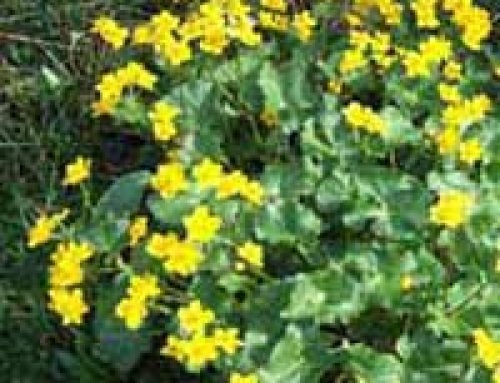Water Soldiers (Stratiotes aloides) are a unique and fascinating plant species that can add both beauty and ecological value to a pond.
Water soldiers are perennial plants that grow from small, bulb-like structures called turions. These turions are capable of withstanding cold temperatures and can remain dormant at the bottom of the pond during the winter months, before floating to the surface in the spring to grow new plants.
Water soldiers have a distinctive appearance, with their long, narrow leaves that resemble small swords or pine needles. They typically grow to around 20-40cm in length, although they can reach up to 60cm in ideal conditions.

Water solider – Stratiotes aloides – Pond Plants
One of the most interesting features of water soldiers is their ability to float on the water’s surface. This is due to small, gas-filled bladders located on their leaves that provide buoyancy. Water soldiers are also able to move around on the water’s surface, allowing them to seek out sunlight and nutrients as needed.
In terms of their ecological value, water soldiers can provide important habitat for aquatic insects and other small creatures. They also help to control algae growth by absorbing excess nutrients from the water, and can provide shade and shelter for fish and other aquatic life.
However, as with any pond plant, it’s important to ensure that water soldiers are managed properly to prevent them from becoming invasive. This may involve manually removing excess plants or using herbicides in some cases.
Overall, water soldiers are a fascinating and valuable addition to any pond, and can help to create a vibrant and healthy ecosystem. By learning about the unique characteristics and ecological value of plants like water soldiers, pond owners can gain a deeper understanding of how to create and maintain a beautiful and thriving pond.
Planting Water Soldiers in your pond (Stratiotes aloides)
- Water soldiers are native to Europe, but can be found in ponds and lakes throughout the UK.
- Water soldiers are considered a “primitive” plant species, as they lack true roots and do not produce flowers or seeds.
- Water soldiers are known to host a wide range of aquatic invertebrates, including freshwater snails, mites, and midges.
- The leaves of water soldiers are covered in small, hooked spines that can deter herbivores and other potential predators.
- Water soldiers can reproduce asexually through the formation of daughter plants, which grow from the base of the parent plant.
- The nutrient-absorbing capabilities of water soldiers make them a popular choice for natural water treatment systems, such as constructed wetlands.
- Water soldiers are capable of surviving in a wide range of water conditions, from acidic to alkaline, and from soft to hard water.
- Water soldiers have a relatively long lifespan compared to other pond plants, with individual plants able to survive for up to 5 years.
- Water soldiers are a popular choice for “wild” or “naturalistic” pond designs, as they add a sense of wildness and unpredictability to the water surface.









is it worth weighting down water soldiers when you first introduce them to a pond or just let them be floating around
Hi, we have just moved to a property with a fish pond, and as we are complete novices to ponds wanted to ask a few questions?! Firstly, there are several tall reeds growing around the pond and we wondered if and when these should be cut back and if they should be cut down to ground level. Also, we have been told not to feed the fish during the winter months, is this correct? I notice that when they see activity they are coming to the top of the pond, almost asking for food! Any advice would be gratefully received
Could you tell me why my water solders are not growing in my pond this year
Hi, You don’t feed fish when the water temperature gets below 10o’c. They hiberanate over winter. Before you cut down the tall reeds, are there herons in the area? The reeds prevent them from eating your fish! Herons like a clear path to ypur pond so the reeds may be there to protect the fish! I’ve lost a lot of fish to these little blighters!
I am a novice to ponds. I have a new medium sized pond which I intend to use only for lilies. Do I need oxygenating plants as well?
Could you tell me why water solders are not growing this year in my pond
Why are my water solders not growing this year in my pond